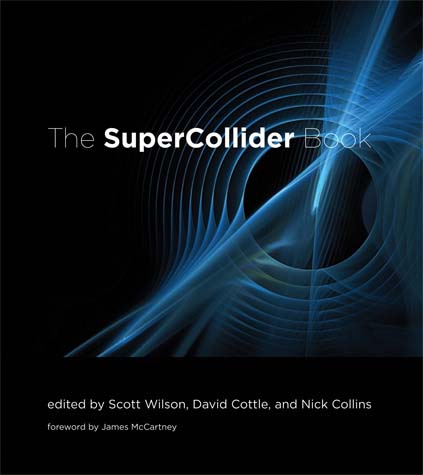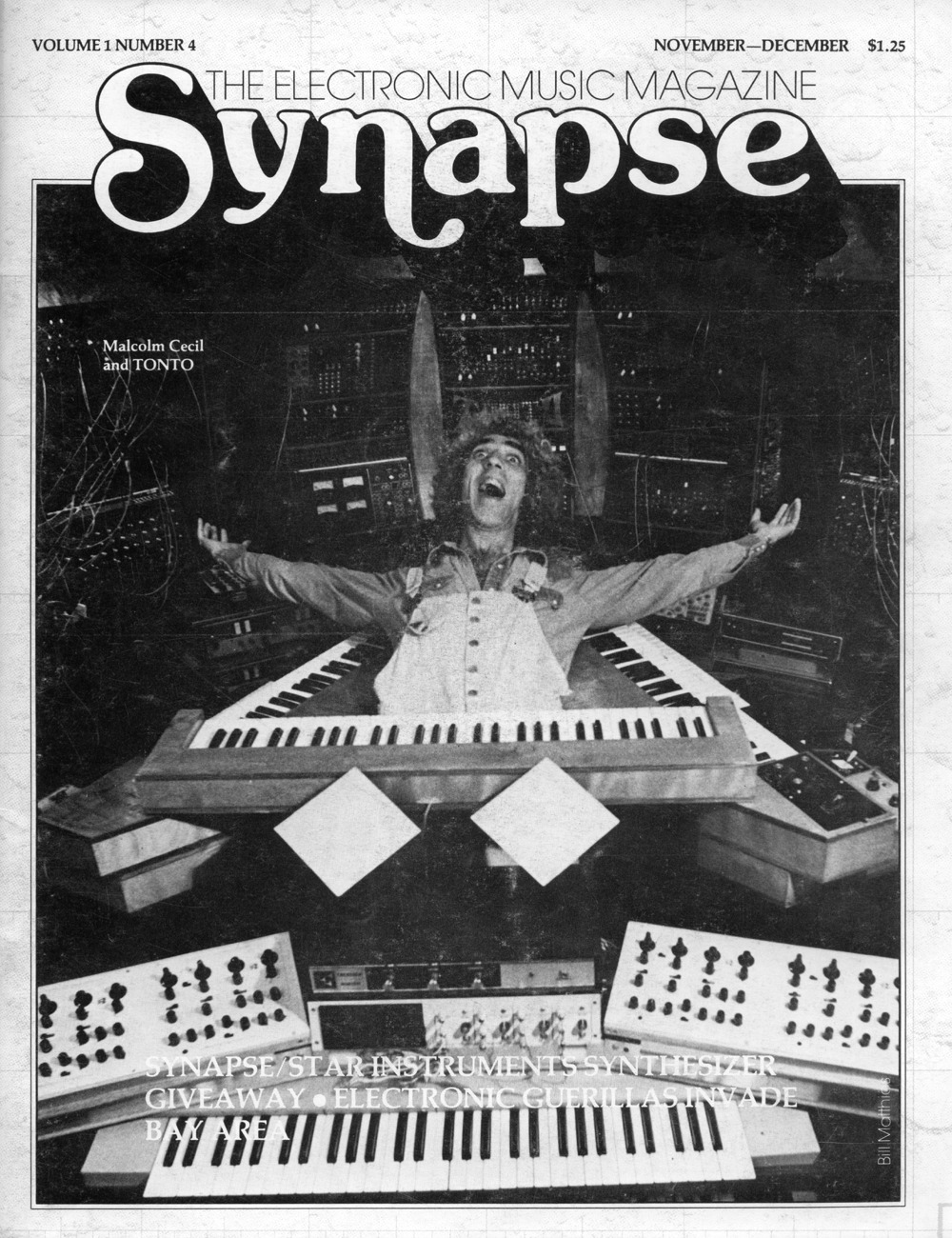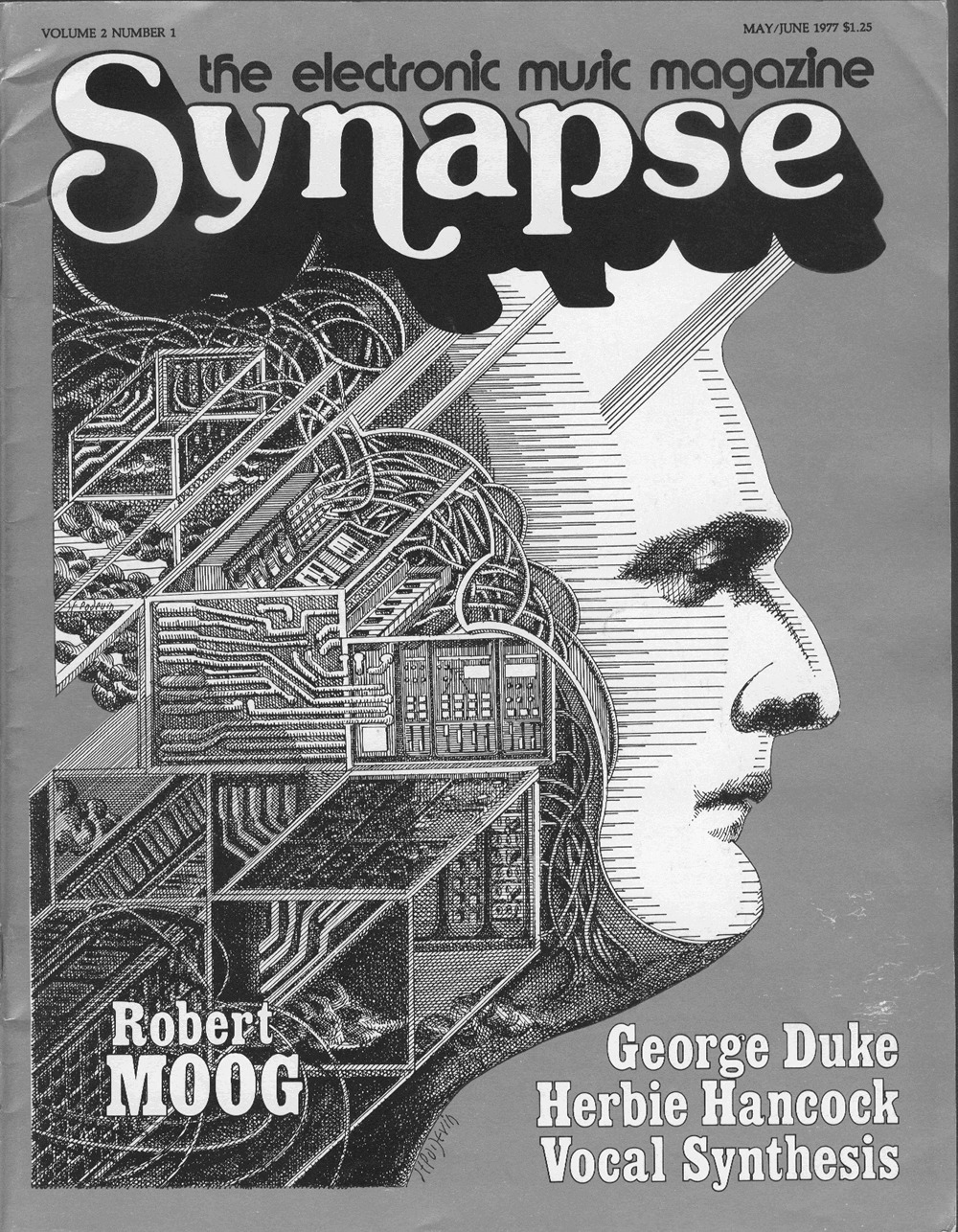Scott Wilson, David Cottle, Nick Collins (eds.): The SuperCollider Book (2011)
Filed under book | Tags: · code, computer music, microsound, music, programming, software, sonification, sound, sound art, sound synthesis

“SuperCollider is one of the most important domain-specific audio programming languages, with potential applications that include real-time interaction, installations, electroacoustic pieces, generative music, and audiovisuals. The SuperCollider Book is the essential reference to this powerful and flexible language, offering students and professionals a collection of tutorials, essays, and projects. With contributions from top academics, artists, and technologists that cover topics at levels from the introductory to the specialized, it will be a valuable sourcebook both for beginners and for advanced users.
SuperCollider, first developed by James McCartney, is an accessible blend of Smalltalk, C, and further ideas from a number of programming languages. Free, open-source, cross-platform, and with a diverse and supportive developer community, it is often the first programming language sound artists and computer musicians learn. The SuperCollider Book is the long-awaited guide to the design, syntax, and use of the SuperCollider language. The first chapters offer an introduction to the basics, including a friendly tutorial for absolute beginners, providing the reader with skills that can serve as a foundation for further learning. Later chapters cover more advanced topics and particular topics in computer music, including programming, sonification, spatialization, microsound, GUIs, machine listening, alternative tunings, and non-real-time synthesis; practical applications and philosophical insigh”s from the composer’s and artist’s perspectives; and “under the hood,” developer’s-eye views of SuperCollider’s inner workings. A Web site accompanying the book offers code, links to the application itself and its source code, and a variety of third-party extras, extensions, libraries, and examples.”
Foreword by James McCartney
Publisher MIT Press, 2011
ISBN 0262232693, 9780262232692
756 pages
Review: Dave Phillips (Linux Journal).
PDF (removed on 2014-2-4 upon request of the publisher)
Code (ZIP)
Book resources (code, video examples)
Book errata
Synapse: The Electronic Music Magazine (1976-1979)
Filed under magazine | Tags: · computer music, computing, electroacoustic music, electronic music, music, sound art, sound recording, sound synthesis



Synapse: The Electronic Music Magazine (later Synapse: International Electronic Music) was a bi-monthly American magazine about synthesizers and electronic music published March 1976 to June 1979. During an era when commercial synthesizers were still pretty new and mostly DIY, Synapse was notable for its high production values, interviews with famous musicians, and articles by well-known writers.
The production team consisted of editor Douglas Lynner, art director Chris August, photographer Bill Matthias and managing editors Colin Gardner and Melodie Bryant. After 14 issues they ran out of money and closed down.
The magazine issues have been scanned and posted online by its founder Cynthia Webster at Cyndustries.
Volume 1, Number 2, April/May 1976 (added on 2019-8-11 via diophantine.net HT Ezra J. Teboul)
Volume 1, Number 3, September/October 1976
Volume 1, Number 4, November/December 1976
Volume 1, Number 5, January/February 1977
Volume 1, Number 6, March/April 1977
Volume 2, Number 1, May/June 1977
Volume 2, Number 2, July/August 1977
Volume 2, Number 3, November/December 1977
Volume 2, Number 4, January/February 1978
Volume 2, Number 5, March/April 1978
Volume 2, Number 6, Summer 1978
Volume 3, Number 1, January/February 1979
Volume 3, Number 2, Summer 1979
GIFs (on Cyndustries.com, via Internet Archive)
David Cope: Virtual Music: Computer Synthesis of Musical Style (2001)
Filed under book | Tags: · cognition, composing, computer music, experimental music, music, sound synthesis

Virtual Music is about artificial creativity. Focusing on the author’s Experiments in Musical Intelligence computer music composing program, the author and a distinguished group of experts discuss many of the issues surrounding the program, including artificial intelligence, music cognition, and aesthetics.
The book is divided into four parts. The first part provides a historical background to Experiments in Musical Intelligence, including examples of historical antecedents, followed by an overview of the program by Douglas Hofstadter. The second part follows the composition of an Experiments in Musical Intelligence work, from the creation of a database to the completion of a new work in the style of Mozart. It includes, in sophisticated lay terms, relatively detailed explanations of how each step in the process contributes to the final composition. The third part consists of perspectives and analyses by Jonathan Berger, Daniel Dennett, Bernard Greenberg, Douglas R. Hofstadter, Steve Larson, and Eleanor Selfridge-Field. The fourth part presents the author’s responses to these commentaries, as well as his thoughts on the implications of artificial creativity.
The book includes an appendix providing extended musical examples referred to and discussed in the book, including composers such as Scarlatti, Bach, Mozart, Beethoven, Schubert, Chopin, Puccini, Rachmaninoff, Prokofiev, Debussy, Bartok, and others. It is also accompanied by a CD containing performances of the music in the text.
With commentary by Douglas Hofstadter
And with perspectives and analysis by Eleanor Selfridge-Field, Bernard Greenberg, Steve Larson, Jonathan Berger, and Daniel Dennett
Publisher MIT Press, 2001
ISBN 026203283X, 9780262032834
565 pages
Experiments in Musical Intelligence (author)
PDF (updated on 2012-6-13)
Comment (0)
